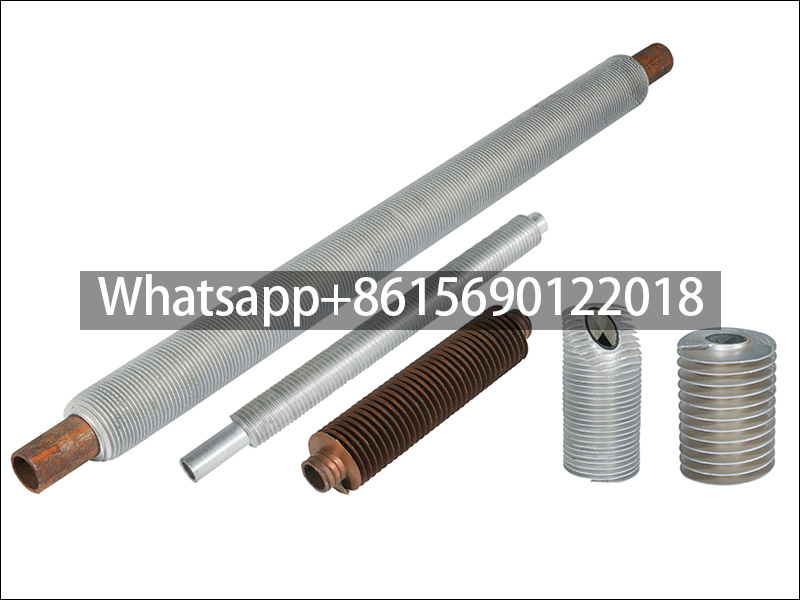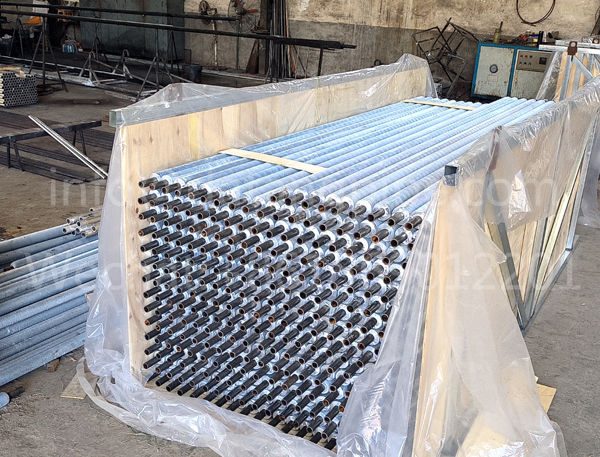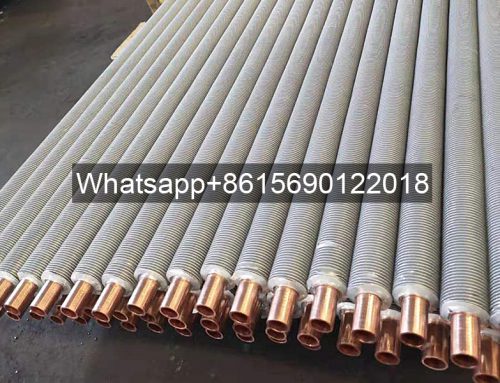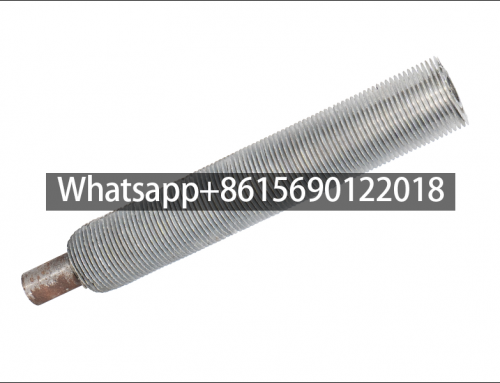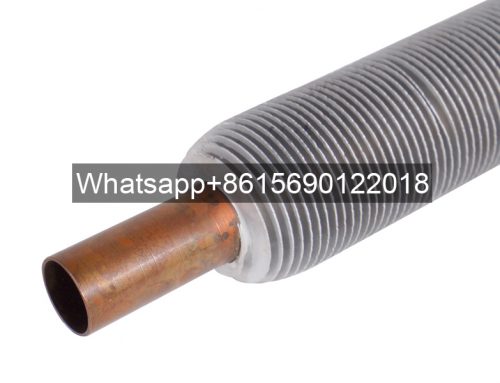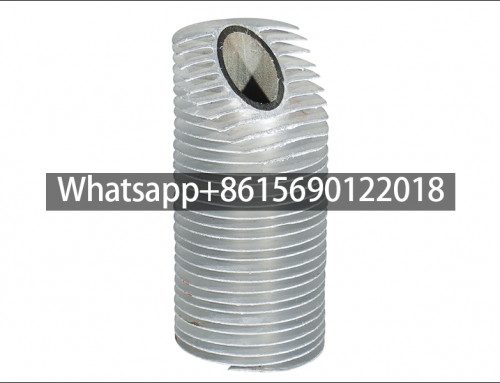Project Description
Aluminum Extruded Finned Tubes for High Temperature Kilns
- Product Name: Aluminum Extruded Finned Tubes for High Temperature Kilns
- Leave Your Message
In the operation system of high temperature kilns, heat exchange is a crucial link, and aluminum extruded finned tubes have become a key component of high temperature kiln heat exchange with their unique performance and advantages.
Aluminum extruded finned tubes, first of all, are made of aluminum, which has a series of excellent physical properties. Its density is relatively low, which reduces the weight of aluminum rolled finned tubes compared to some other metal materials.
During the installation and maintenance of high temperature kilns, lighter weight is conducive to reducing the load of equipment, whether in the transportation link or in the actual kiln construction process, it can reduce the consumption of manpower and material resources.
For example, in the construction of some large high temperature kiln groups, the extensive use of aluminum rolled finned tubes can significantly improve construction efficiency and reduce construction costs.
Aluminum itself has good thermal conductivity, which is fully reflected in the heat exchange application of high temperature kilns.
In the high temperature environment inside the kiln, heat can be quickly transferred to the fins through the tube wall of the aluminum extruded fin tube, and then the fins can be used for efficient heat exchange with the surrounding medium with the help of the large surface area of the fins. The design of the fins greatly increases the area of heat exchange, allowing heat to be dissipated or absorbed more quickly, thereby effectively improving the thermal utilization efficiency of the kiln.
Compared with traditional light tubes, the heat exchange efficiency of aluminum rolled fin tubes can be increased several times, which is undoubtedly an important way to achieve energy conservation and emission reduction for high-temperature kilns with huge energy consumption.
In the harsh environment of high-temperature kilns, aluminum rolled fin tubes also show a certain degree of corrosion resistance. Although aluminum has limited corrosion resistance in some extreme strong acid and alkali environments, the aluminum oxide protective film formed on its surface in the medium environment such as flue gas common in high-temperature kilns can play a good protective role, reduce the risk of corrosion of fin tubes, and thus extend their service life.
This means that during the long-term operation of the kiln, there is no need to frequently replace the fin tubes, which reduces the maintenance cost and downtime of the equipment and ensures the continuity of kiln production.
The manufacturing process of aluminum extruded finned tubes also lays a solid foundation for their application in high-temperature kilns. Through the rolling process, the fins and the base tube can be tightly combined to form an integral structure. This close combination ensures that there will be no excessive loss or obstruction of heat during the transfer process, ensuring the high efficiency and stability of heat exchange.
The rolling process can accurately control the shape, size and spacing of the fins, and customize production according to the heat exchange requirements of different high-temperature kilns to further optimize the heat exchange effect.
From an economic point of view, aluminum rolled finned tubes have certain advantages in initial investment costs. The cost of its raw materials is relatively reasonable, and its lighter weight reduces the transportation and installation costs, making the overall purchase and installation costs within an acceptable range.
Due to its good performance, it can improve the thermal efficiency of the kiln and reduce energy consumption. In the long-term operation process, it can also save a lot of energy costs for the enterprise, and has a high cost-effectiveness.
Aluminum rolled finned tubes are not perfect. Its strength may be slightly inferior to some alloy materials, and it may be damaged when subjected to extreme high pressure or mechanical shock.
However, under the normal operation of high-temperature kilns, this risk can be effectively controlled as long as it is reasonably designed and installed.
Aluminum extruded finned tubes for high-temperature kilns have many advantages such as light weight, good thermal conductivity, strong corrosion resistance, excellent manufacturing process and economic benefits.
It occupies an important position in the field of heat exchange of high-temperature kilns, providing strong support for the efficient, stable and energy-saving operation of high-temperature kilns. With the continuous development and improvement of technology, its application prospects will be broader.
Aluminum Extruded Finned Tubes: The Thermal Efficiency Solution for High-Temperature Kilns
1. Material Advantages
- Lightweight Structure: Aluminum’s density (2.7 g/cm³) reduces tube weight by 50-60% compared to steel, facilitating easier installation in kiln systems.
- Thermal Conductivity: With 200-250 W/m·K conductivity, aluminum rapidly transfers heat from kiln gases to process media.
Material Property ComparisonAluminumCarbon SteelCopperDensity (g/cm³)2.77.858.96Thermal Conductivity (W/m·K)200-25045-50380-400Max Continuous Temp (°C)300600250
2. Performance Characteristics
- Heat Exchange Efficiency: Spiral fin designs increase surface area 8-10x versus bare tubes, achieving 3-5x higher heat transfer rates.
- Corrosion Resistance: Natural Al₂O₃ layer protects against kiln exhaust gases (pH 5-9 environments).
Performance MetricsAluminum Finned TubeBare Steel TubeHeat Transfer Coefficient (W/m²·K)80-12020-40Service Life (years)8-125-8Energy Savings (%)25-40-
3. Manufacturing Precision
- Extrusion Process: Achieves 0.05mm fin thickness tolerance and >99% interfacial contact ratio between fins/base tube.
- Customization: Adjustable fin height (5-25mm) and pitch (3-10mm) for specific kiln requirements.
4. Economic Benefits
- Cost Efficiency: 30-40% lower lifecycle costs than stainless steel alternatives due to reduced energy consumption.
- Maintenance: 50% fewer replacements needed versus carbon steel tubes in corrosive kiln environments.
5. Limitations & Solutions
- Mechanical Strength: Limited to
- Temperature Threshold: Above 300°C, thermal expansion requires expansion joint integration.
Conclusion
Aluminum extruded finned tubes combine lightweight design (2.7 g/cm³), exceptional thermal conductivity (200-250 W/m·K), and corrosion-resistant Al₂O₃ layers to deliver 25-40% energy savings in high-temperature kilns. While limited to <300°C applications, their 8-12 year service life and customizable fin configurations (5-25mm height, 3-10mm pitch) make them indispensable for modern thermal systems.


